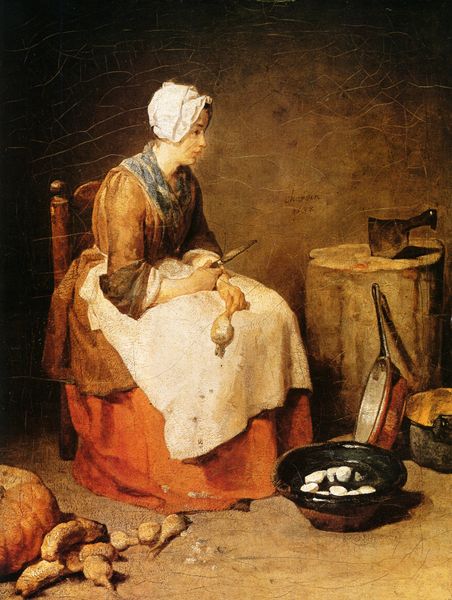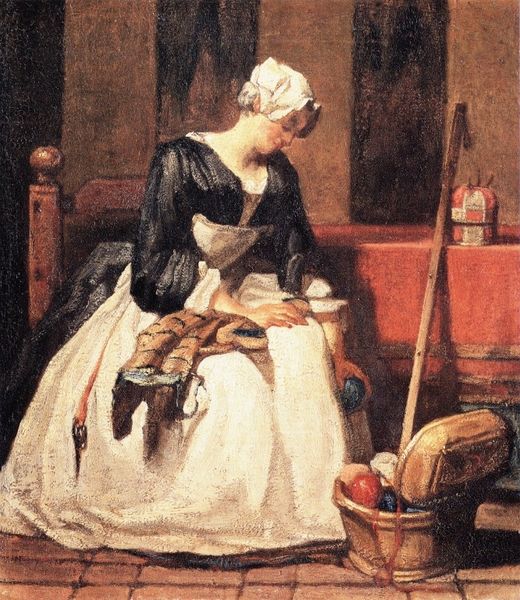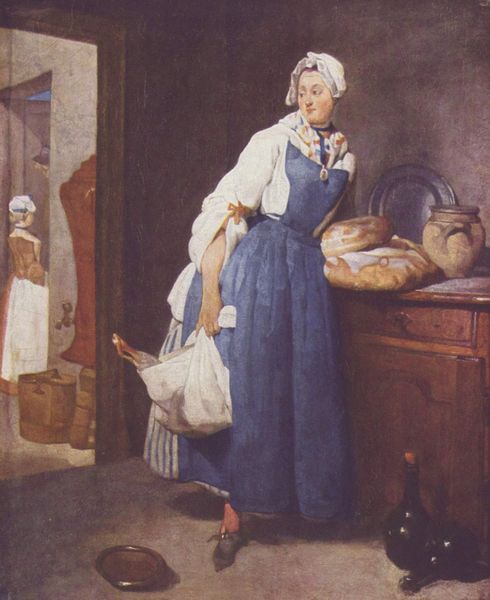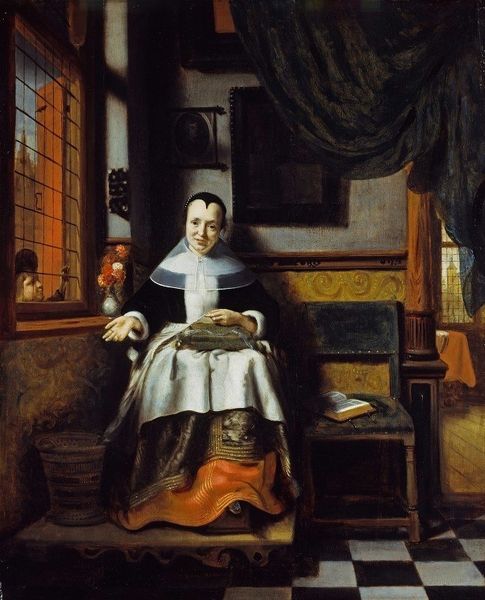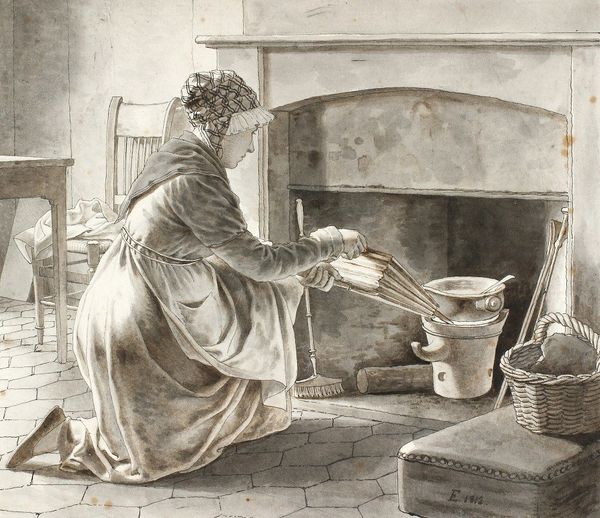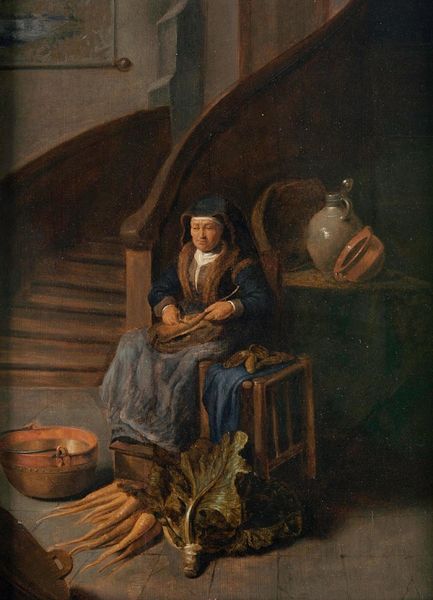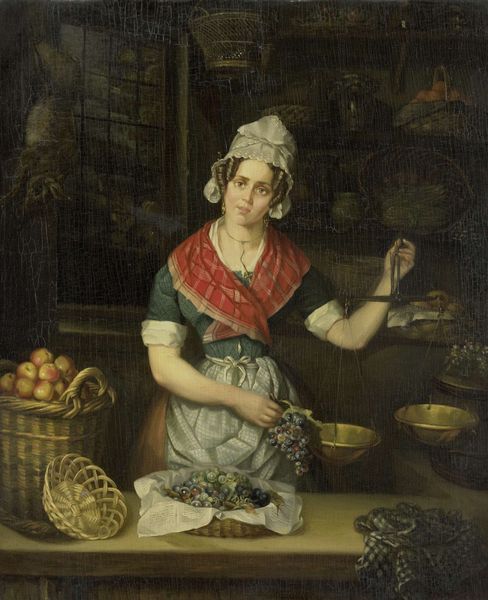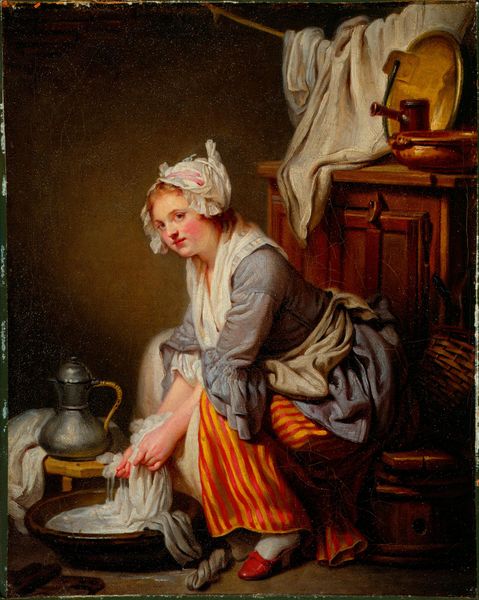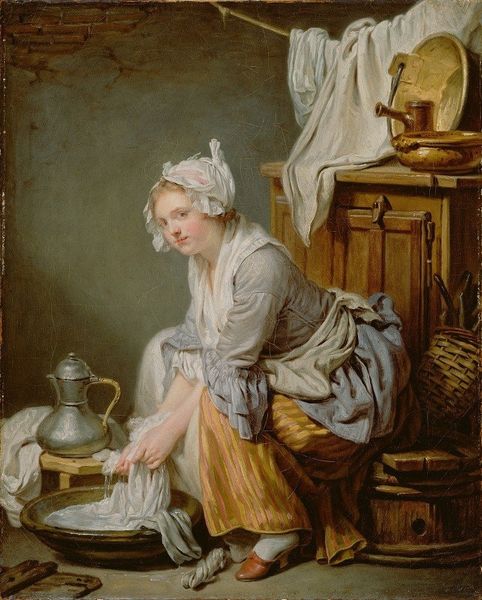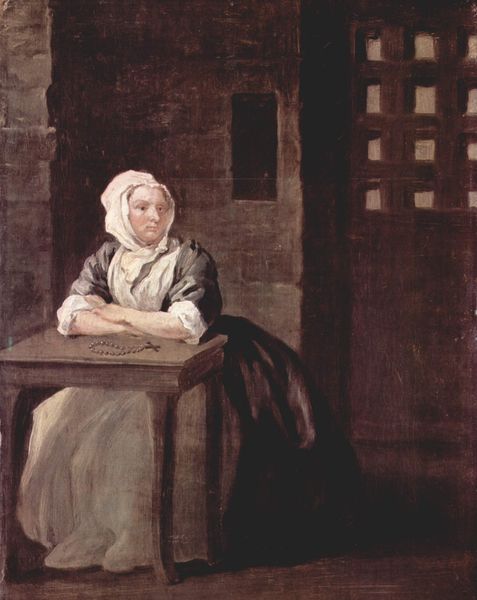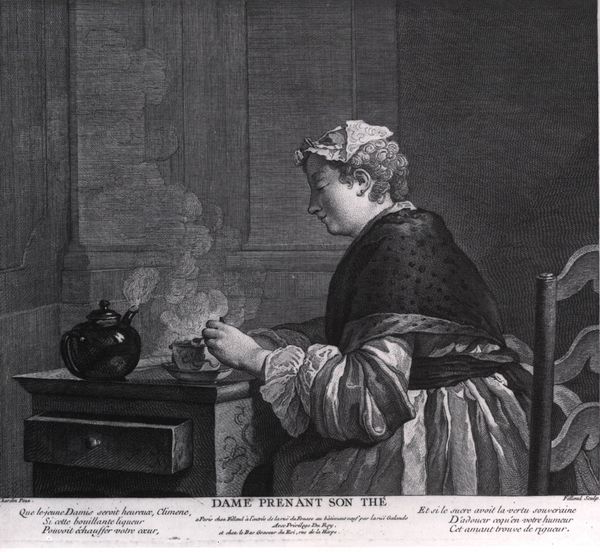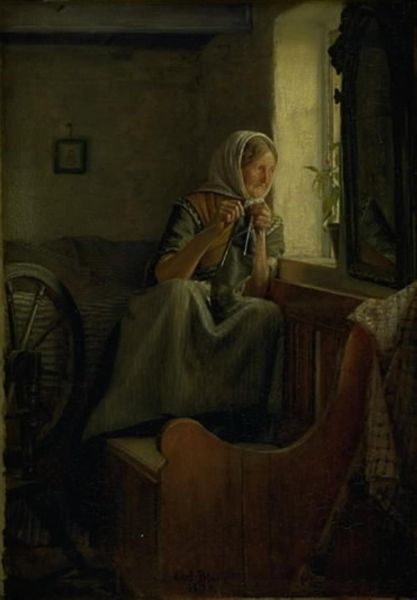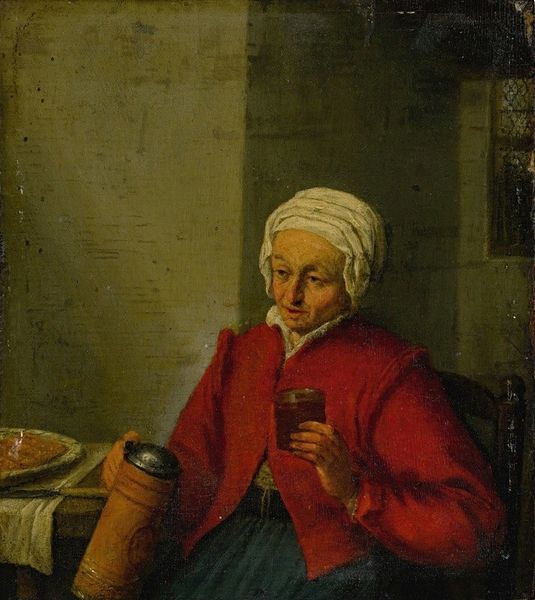
painting, oil-paint
#
portrait
#
baroque
#
painting
#
oil-paint
#
oil painting
#
genre-painting
#
realism
Dimensions: 46.2 x 37 cm
Copyright: Public domain
Curator: When I look at this painting, I feel like I've stepped into a Vermeer scene. There's a stillness, an everyday sort of quiet reverence in the details. Editor: That's Jean-Baptiste-Simeon Chardin’s, Woman Cleaning Turnips painted around 1740. Chardin was celebrated for finding beauty in ordinary domestic life. How does the quietness translate for you in terms of how it operates within art history? Curator: Well, everything's bathed in this gentle, diffused light. And I think it just kind of forces you to slow down. I mean, even her expression is thoughtful but inscrutable. It’s such a captivating mood, don't you think? There’s this intimacy even as we're viewing her objectively. Editor: Absolutely. The setting in the kitchen situates it within the rising bourgeois culture of 18th century France, a time when genre painting became increasingly popular as a way of valorizing and depicting everyday scenes. Paintings like this reinforced specific social norms and ideas about gender roles through the context in which art was shown in Salons, in public exhibitions. It wasn't merely a portrait but almost like a symbol. Curator: Symbol for the ideal of humble industry perhaps? She is carefully peeling her turnip, and then she looks a bit melancholy. This image to me doesn't present a valorization but a truth; one can only look so fondly towards household duties and maybe even the expectation set for her here in 18th century France. The weight of the home perhaps even! Editor: Exactly! The placement of the meat cleaver or axe suggests themes of domestic work linked to gender roles, yet is open to individual interpretations depending on social and historical context. Now we see this as art, rather than mere documentation because there’s the suggestion of narrative rather than an intent to mirror lived realities. The use of light and texture emphasizes this further; an intimate dance! Curator: The 'dance' becomes really the performance that history expects! Regardless it's wonderful to linger over how such commonplace activity gets rendered into something meditative and profound. I do love it. Editor: Yes! And it highlights the ongoing dialogue between art and society across centuries. Paintings like "Woman Cleaning Turnips" offer endless avenues to connect, analyze, and understand our world!
Comments
No comments
Be the first to comment and join the conversation on the ultimate creative platform.
